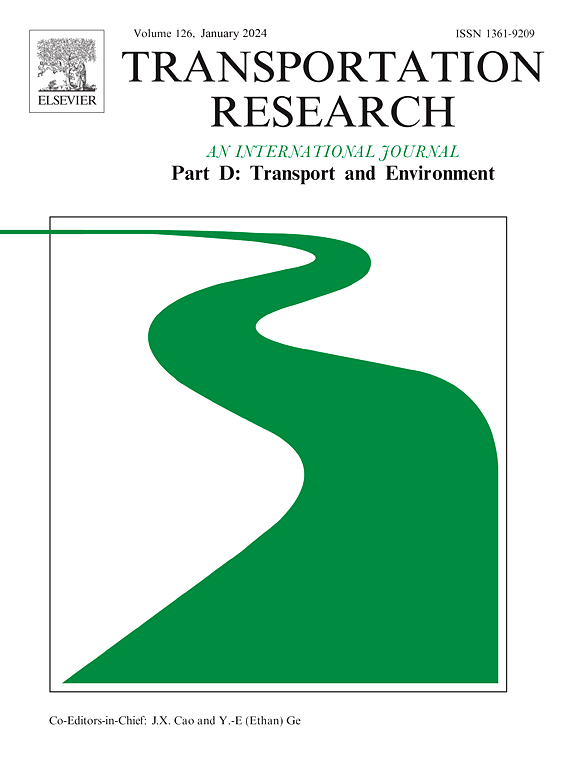Resilience assessment of global container shipping network via port communities
IF 7.3
1区 工程技术
Q1 ENVIRONMENTAL STUDIES
Transportation Research Part D-transport and Environment
Pub Date : 2025-02-18
DOI:10.1016/j.trd.2025.104649
引用次数: 0
Abstract
The global container shipping network (GCSN) is vulnerable to disruptions. This study aims to enhance the GCSN resilience by proposing an enhanced disruption simulation model and introducing a novel research perspective: port communities. The simulation model integrates cascading failure and recovery mechanisms, incorporates ship behaviour during disruptions, and introduces a temporal dimension to track the network’s evolution. Port community-to- community connections provide a clearer and more holistic perspective. Using Infomap algorithm, port communities are identified based on transportation direction, capacity, and geographic proximity, resulting in a decentralized and balanced structure while preserving GCSN’s scale-free and small-world properties. Simulations of various disruption scenarios and recovery strategies yielded optimized key parameters and practical recommendations. For instance, the optimal distance threshold for detecting port communities is 300 km. Additionally, weak correlations between alternative port numbers and community size/throughput (0.17, 0.246) underscore the need for geographically balanced distribution and reduced reliance on single ports.
基于港口社区的全球集装箱航运网络弹性评估
全球集装箱航运网络(GCSN)很容易受到干扰。本研究旨在通过提出一个增强的中断模拟模型和引入一个新的研究视角:港口社区,来增强GCSN的弹性。仿真模型集成了级联故障和恢复机制,结合了中断期间的船舶行为,并引入了一个时间维度来跟踪网络的演变。港口社区与社区之间的联系提供了一个更清晰、更全面的视角。使用Infomap算法,根据运输方向、容量和地理邻近度确定港口社区,从而形成分散和平衡的结构,同时保留GCSN的无标度和小世界属性。模拟各种中断情景和恢复策略,得出优化的关键参数和实用建议。例如,检测港口社区的最佳距离阈值为300公里。此外,备选端口号与社区规模/吞吐量之间的弱相关性(0.17,0.246)强调了地理平衡分布和减少对单个端口的依赖的必要性。
本文章由计算机程序翻译,如有差异,请以英文原文为准。
求助全文
约1分钟内获得全文
求助全文
来源期刊
CiteScore
14.40
自引率
9.20%
发文量
314
审稿时长
39 days
期刊介绍:
Transportation Research Part D: Transport and Environment focuses on original research exploring the environmental impacts of transportation, policy responses to these impacts, and their implications for transportation system design, planning, and management. The journal comprehensively covers the interaction between transportation and the environment, ranging from local effects on specific geographical areas to global implications such as natural resource depletion and atmospheric pollution.
We welcome research papers across all transportation modes, including maritime, air, and land transportation, assessing their environmental impacts broadly. Papers addressing both mobile aspects and transportation infrastructure are considered. The journal prioritizes empirical findings and policy responses of regulatory, planning, technical, or fiscal nature. Articles are policy-driven, accessible, and applicable to readers from diverse disciplines, emphasizing relevance and practicality. We encourage interdisciplinary submissions and welcome contributions from economically developing and advanced countries alike, reflecting our international orientation.

 求助内容:
求助内容: 应助结果提醒方式:
应助结果提醒方式:


